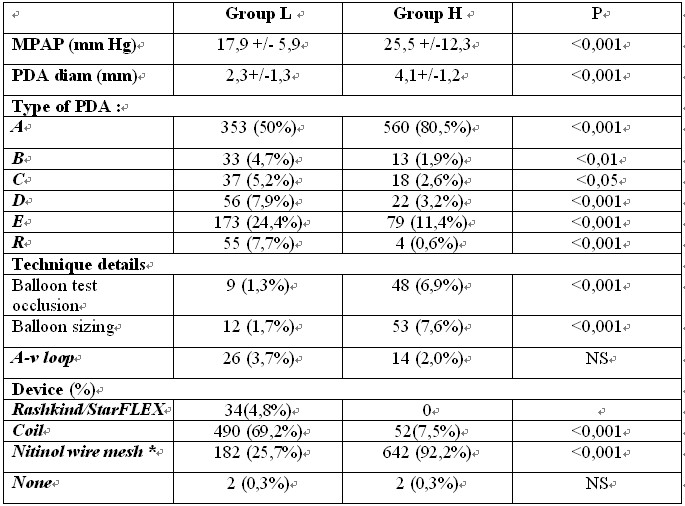The purpose of this study was to compare the anatomical and hemodynamic features of the patent ductus arteriosus (PDA) in patients (pts) living at low (group L) and high altitude (group H) (1500-4200 meters above sea level). In all transcatheter closure of PDA using different devices was attempted. Data was collected retrospectively at multiple institutions in 1404 consecutive pts – 708 in group .......
Patent ductus arteriosus at lowland and highland habitants: Implications for transcatheter closure – A retrospective multinational registry study.
Jacek Bialkowski on behalf of WG Interventional Cardiology Latin Pediatric Cardiology Society
The purpose of this study was to compare the anatomical and hemodynamic features of the patent ductus arteriosus (PDA) in patients (pts) living at low (group L) and high altitude (group H) (1500-4200 meters above sea level). In all transcatheter closure of PDA using different devices was attempted. Data was collected retrospectively at multiple institutions in 1404 consecutive pts – 708 in group L and 696 in group H. Mean pts age s in group L was 9, 9 +/- 13, 5 years and in group H - 8,2+/-19,7 years. The diameter of the PDA was 2,3 +/-1,3 in group L and 4,1+/-1,2 mm in group H (p<0,001). The mean pulmonary artery pressure was 17,9 +/- 5,9 and 25,5 +/- 12,3 mm Hg respectively (p<0,001). In the group H in comparison to the group L more frequently angiographic type A of PDA was observed, in the group L in comparison to group H types B, C, D, E and R. In group L the procedure was successful in 99,4% and in group H in 99,1%. Following devices were used in group L and H: self expanding nitinol occluders (mostly Amplatzer devices) 25,7% vs 92,2% ( p<0,001), coils 69,2% vs 7,5% ( p<0,001) respectively. In 4,8% of pts in group L double umbrella systems were applied.
In conclusion PDAs in pts living at high altitude have a different anatomical and hemodynamic features compared to those living at lowland. This finding has an important implication for further strategy of transcatheter closure at different sites.
Table 1
Catheterization data obtained in patients with patent ductus arteriosus living at low and high altitude.

Legend
Group L – patients with PDA living permanentlyat low altitude, group H – patients with PDA living permanently at high altitude, p – probablility of statistical significance, MPAP- mean pulmonary artery pressure, PDA diam – minimal ductal diameter, Type of PDA – types of PDA according to Kirchenko, a-v loop –needy to create arterio-venous loop, – Rashkind/ StarFLEX double umbrella systems * self-expanding nitinol wire-mesh occluders ( mostly Amplatzer devices) .



 京公网安备 11010502033353号
京公网安备 11010502033353号